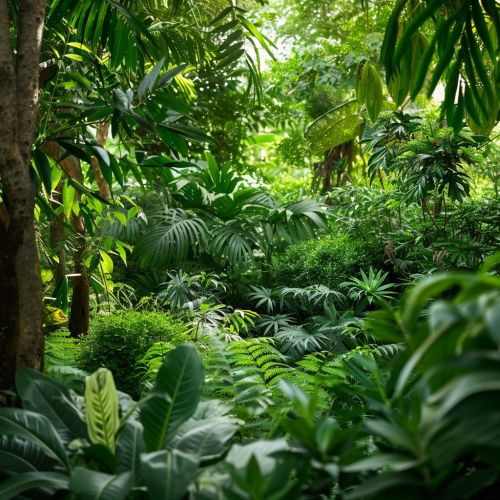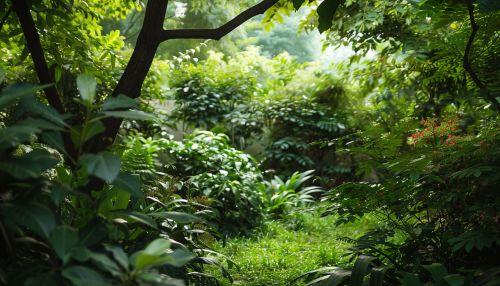Trophic Levels
Introduction
Trophic levels are the hierarchical strata within an ecosystem, representing the position of organisms in a food chain. Each level is defined by the way organisms obtain their energy and nutrients. The concept of trophic levels is fundamental to understanding the flow of energy and matter through ecological systems. This article delves into the complexities of trophic levels, exploring their structure, function, and significance in maintaining ecological balance.
Structure of Trophic Levels
Trophic levels are typically divided into five primary categories: primary producers, primary consumers, secondary consumers, tertiary consumers, and quaternary consumers. Each level represents a step in the transfer of energy and nutrients from one group of organisms to another.
Primary Producers
Primary producers, also known as autotrophs, are organisms that produce their own food through photosynthesis or chemosynthesis. They form the base of the trophic pyramid and are essential for the survival of all other trophic levels. Common examples include plants, algae, and certain bacteria.


Primary Consumers
Primary consumers, or herbivores, feed directly on primary producers. They play a crucial role in transferring energy from autotrophs to higher trophic levels. Examples of primary consumers include deer, rabbits, and certain insects.
Secondary Consumers
Secondary consumers are carnivores that feed on primary consumers. They are typically small to medium-sized predators such as frogs, small birds, and certain fish. These organisms help control the population of herbivores, maintaining a balance within the ecosystem.
Tertiary Consumers
Tertiary consumers are higher-level predators that feed on secondary consumers. They are often larger and more dominant species such as eagles, large fish, and some mammals. These consumers play a critical role in regulating the populations of secondary consumers.
Quaternary Consumers
Quaternary consumers are apex predators at the top of the food chain. They have no natural predators and are crucial for maintaining the structure of the ecosystem. Examples include lions, sharks, and humans.
Energy Flow and Efficiency
Energy flow through trophic levels is governed by the laws of thermodynamics. The primary source of energy for most ecosystems is sunlight, which is captured by primary producers through photosynthesis. This energy is then transferred through the food chain, with each trophic level receiving only a fraction of the energy from the level below.
Energy Transfer Efficiency
The efficiency of energy transfer between trophic levels is typically low, with only about 10% of the energy being passed on to the next level. This phenomenon, known as the 10% rule, results in a decrease in biomass and energy availability as one moves up the trophic pyramid.
Ecological Pyramids
Ecological pyramids visually represent the distribution of energy, biomass, or numbers of organisms across trophic levels. There are three main types of ecological pyramids: energy pyramids, biomass pyramids, and pyramids of numbers. Each type provides different insights into the structure and function of ecosystems.
Trophic Dynamics and Ecosystem Stability
The interactions between trophic levels are complex and dynamic, influencing the stability and resilience of ecosystems. Changes in one trophic level can have cascading effects throughout the entire food web.
Top-Down and Bottom-Up Control
Ecosystems can be regulated by top-down or bottom-up control mechanisms. Top-down control occurs when predators regulate the population of prey species, while bottom-up control is driven by the availability of resources such as nutrients and primary producers. Both mechanisms are essential for maintaining ecological balance.
Trophic Cascades
Trophic cascades are indirect interactions that occur when changes in the population of one trophic level cause significant effects on other levels. For example, the removal of a top predator can lead to an increase in herbivore populations, which in turn can result in overgrazing and a decline in primary producers.
Human Impact on Trophic Levels
Human activities have profound effects on trophic levels and the overall structure of ecosystems. Overfishing, habitat destruction, pollution, and climate change are some of the major factors influencing trophic dynamics.
Overfishing and Marine Ecosystems
Overfishing can lead to the depletion of key species, disrupting marine food webs and causing trophic cascades. The decline of apex predators such as sharks can result in an increase in the population of smaller predatory fish, which can then overconsume herbivorous fish and lead to the degradation of coral reefs.
Habitat Destruction
Habitat destruction, such as deforestation and urbanization, reduces the availability of resources for primary producers and disrupts the entire trophic structure. Loss of habitat can lead to the extinction of species and the collapse of local ecosystems.
Pollution and Bioaccumulation
Pollution, particularly the release of toxic substances, can have severe effects on trophic levels. Bioaccumulation occurs when toxins build up in the tissues of organisms, becoming more concentrated as they move up the food chain. This can lead to health problems for top predators, including humans.
Climate Change
Climate change affects trophic levels by altering the distribution and abundance of species, changing migration patterns, and impacting the availability of resources. These changes can disrupt the balance of ecosystems and lead to shifts in trophic dynamics.
Conclusion
Understanding trophic levels is essential for comprehending the flow of energy and nutrients through ecosystems. The intricate relationships between different trophic levels highlight the complexity and interdependence of life on Earth. Human activities pose significant challenges to the stability of these systems, making it crucial to adopt sustainable practices to preserve ecological balance.
